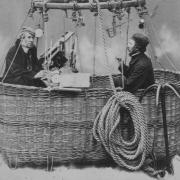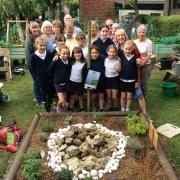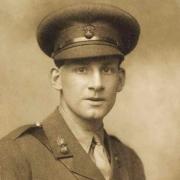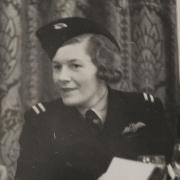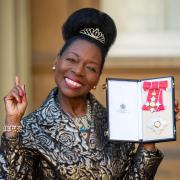Fifty years ago, Tenterden’s residents decided that their five glorious centuries of independence should not go unmarked. Prompted to do so by the establishment of the new Tenterden Town Council (which replaced Tenternden Borough and Rural councils), they set about organising a week-long festival of celebration to commemorate the town’s unique and fascinating history. Perhaps the most extraordinary - and enduring - contribution was a 12m-long wall hanging, created by the pupils at Tenterden Church of England Junior School. This remarkable work of art was given into the safekeeping of the town’s museum and has been on display there ever since its doors opened in 1977. This year, to mark the 50th anniversary of the creation of the ‘Tenterden Tapestry’, as it became known, volunteers at the museum have been helping a group of pupils from the same school to create their own panel, portraying life in Tenterden in the 21st-century.
Loosely based on the design of the famous textile chronicle of Bayeux (hence its name), the Tenterden Tapestry is actually a gigantic, fabric collage that details the story of life in Tenterden from the Roman period to the 1970s. The project was the brainchild of class teacher, Margaret Maisey, who was inspired by a visit to view the Overlord Embroideries. This series of thirty-four panels, designed by Sandra Lawrence to commemorate the D-Day Landings and now on permanent display at The D-Day Story in Southsea, Portsmouth, was stitched by the Royal School of Needlework’s professional embroiderers over a period of six years. By contrast, Margaret’s team of 220 seven-to-eleven-year-olds had just six weeks to complete their creation.

The designs for 14 historical scenes were drawn up from illustrations and photographs, chosen by the teachers.These sketches were enlarged and outlined on sugar paper to form a set of templates from which the fabric ‘jigsaw puzzle’ was cut. Classes shared the construction of these pictures, sections from each panel being distributed across the year groups, and the children worked together as one, giant, crafting co-operative. Both Margaret and Mark Turner, who was a ten-year-old pupil at the time, can recall the frenetic energy of those six weeks.Every day, as Margaret explains, would begin with ordinary lessons in the morning, but the afternoons were devoted to working on the Tapestry. ‘I’d never enjoyed school so much!’ says Mark, ‘there was such a sense of purpose and real pride in what we were doing.’
The long, hessian background was hung from the climbing apparatus in the school hall - the only space large enough to accommodate it. Each afternoon, once the children had left, Margaret, along with colleague, Sandi Boyland, would stick the newly made pieces in place. Sometimes, one or two of the children would stay behind to help, excited to watch as the complex, historically accurate scenes came together. Little by little, the panels began to take shape - to the wonder and amazement of the children involved; as Mark remembers,‘we couldn’t wait to get in to school in the morning to see what had changed and where our pieces had been put’. The level of detail in the pictures is astonishing, from the thatching on the Anglo-Saxon workshop to the individual windows and roofing tiles of the buildings on the High Street. Leaves on trees and hedges are picked out in multiple shades of green felt and each of the sheep and cows at the livestock market is unique. The period clothing is clearly identifiable and the two royal figures, Henry VIII and his daughter, Elizabeth I, are dressed in sumptuous brocades with glittering gold details.

There is a whole host of characters appearing outside of the central, historical scenes, too: a ‘supporting cast’ of 220 miniature self-portraits of the young artists fills the entire length of both the top and bottom borders. The children made drawings of themselves doing something they enjoyed - a favourite sport or hobby - which they brought to life in coloured felt and fabric. As Margaret explains, this 10-15cm figure was a good ‘starter’ exercise before the children embarked on the larger, more complicated panels. In some ways, these little characters are the most interesting elements of the Tapestry and give such a vibrant and joyful impression of childhood in 1974. There are bicycles, skipping ropes, swings, roller-skates and yo-yos. Children are playing football, tennis, cricket or netball. Some of the girls are dressed in the fashionable flares and maxi-dresses of the era and many of the boys, like Ian Martin, who had just joined the school at the start of 1974, and was seven at the time, are kitted out in their favourite team’s colours, ‘I’m in a football strip with light blue and white stripes,’ says Ian, ‘I’m third from the left at the top’. If you look carefully, you will notice children dancing, sailing, fishing, or walking their dogs; one little girl is even walking her cat, Susie. And here and there are bright, orange fabric representations of that most iconic of 1970s children’s must-haves, the Space Hopper! Margaret made a list of the names of every individual involved, all carefully written in her distinctive, elegant calligraphy.
When it came to deciding what should represent 1974’s ‘Tenterden Today’, Margaret explains that this scene was entirely the children’s own work. The two boys voted by their peers as the school’s best artists took a chair each to the top of Recreation Ground Road, where they sat and drew exactly what they saw. The television aerial, zebra crossing, and boxy cars fix the picture firmly within the late 1900s, but other features - the Town Hall, the Old Grammar School - link this image with others of the historical scenes. The Church Tower, soaring above the road, recorded by two children 50 years ago, is also captured in the 2024 panel, evidence indeed of the deeply-rooted sense of history and continuity with which this community is endowed.

The Tapestry attracted local and national media attention, appearing as a news item and featuring in Creative Needlecraft magazine. Berol, the company that manufactured and provided Marvin Medium, the glue used for the project, were so impressed that they used photographs of the Tapestry in a publicity brochure. In 1976, cricket commentator, author and presenter Brian Johnstone came to Tenterden to record an episode of BBC Radio's Down Your Way and took the opportunity to view the Tapestry with the school’s headteacher, Peter Skinner. He also interviewed three of the children who had helped make it.
Town Mayor, Reuben Collison, said of the local children,‘I hope that their interest in the life of the town will remain with them as they grow older.’ It seems his hope was well-founded, as many of those same children (some of whom have, inevitably, moved away from the town) continue to visit, bringing their own children and grandchildren to the Museum to view the Tapestry, pointing out with great pride the elements for which they were responsible. Today’s junior school pupils are equally keen to point out their parents and grandparents among the figures in the borders.

In 2009, the Museum held a reunion for the Tapestry’s makers, who enjoyed the opportunity to catch up, reminisce and marvel at the passage of time. This year, to celebrate the grand occasion of the Tapestry’s golden half-century, the team at Tenterden Museum decided to create a new panel with the junior school’s current pupils. The children were asked two simple questions: what is important to you in Tenterden and what is new in the town since 2000? High on the list of significant places included the Recreation Ground, School, Church and Millennium Gardens, whilst notable changes included new housing, the town beacon and the advent of electric cars. All these elements and more were incorporated into the overall design, which was created in the same style as the original, and, just like their 1970s predecessors, each of the children involved in the project made their own, miniature self-portrait.
Once it is completed, the new panel will be revealed to the school in a special assembly, but - as I write in June - the real celebration will be the grand, public unveiling at Tenterden Museum at 11am on July 13. Many of those involved in the 1974 project, including Margaret Maisey, will be present at the celebration, along with the children who created the 2024 panel and their families. Open to everyone from 10am, the event will also feature a display of the preparatory works created by the children this year, as well as information about the original project. If you’d like to see the 1974 Tenterden Tapestry, or have a look at the fabulous 2024 panel, please pay a visit to Tenterden Museum, where both items will be proudly displayed for years to come.

Tenterden Museum is open Monday-Saturday from 10am until 4pm, and Sundays 1pm-4pm. For more information about this event, or to find out more about Tenterden Museum, see tenterdenmuseum.co.uk or Facebook page - Tenterden and District Museum.






